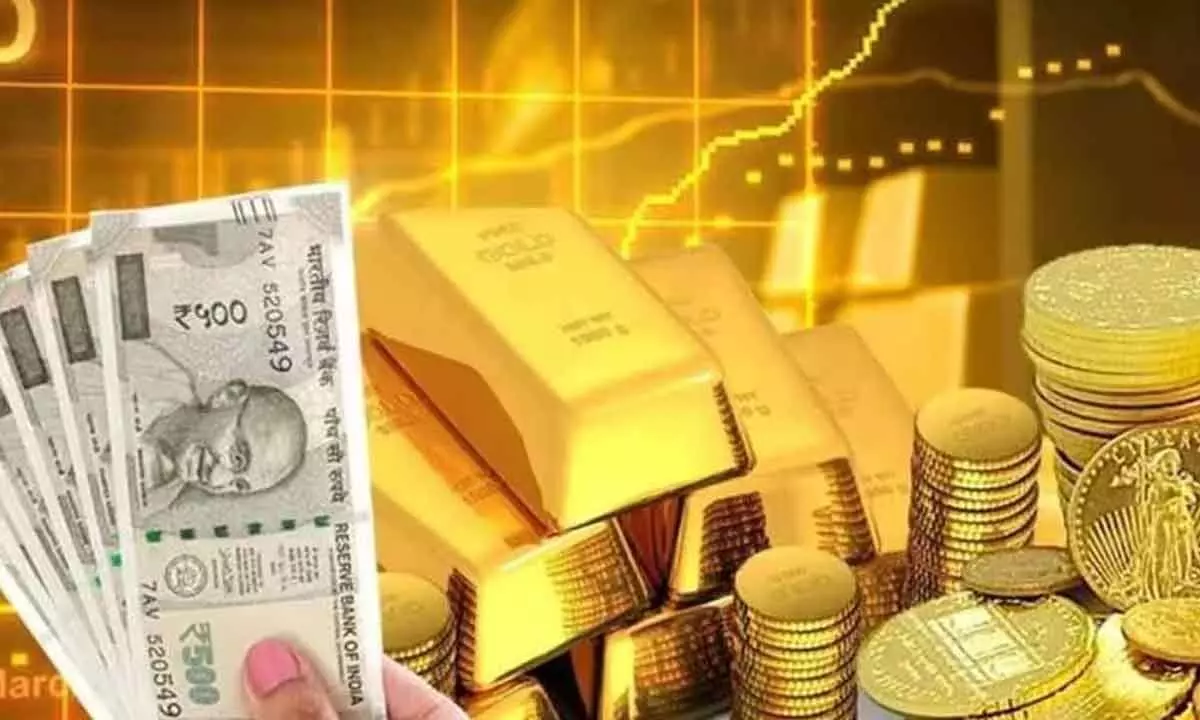Live
- 13 killed, 18 injured as landslides, flash floods hit Indonesia's North Sumatra province
- Israeli PM seeks additional delay of testimony in court for criminal trial
- JAIN International Residential School, Bengaluru jointly with The Sports School to announce India’s First Integrated Scholarship Future25
- Sale certificate issued in pursuance to a court's auction not required to be stamped: Supreme Court
- Andhra Pradesh: Jagan flays Chandrababu-led govt for neglect of education
- Sri Lanka issues flood warnings for 12 flood-prone river basin areas
- IPL 2025 Auction: Venkatesh Iyer sold to KKR for Rs 23.75 cr, Stoinis joins PBKS for Rs 11 crore
- Kharge to lead Opposition strategy meeting as Parliament session kicks off on Monday
- Three killed in firing as violence breaks out amid Sambhal mosque survey in UP
- IPL 2025 Auction: Ravichandran Ashwin, Rachin Ravindra return to Chennai Super Kings
Just In
India focuses at monetising its stock of gold


India is one of the world’s largest gold bar and coin markets. Investment demand for gold is driven by its safe-haven appeal and the ability to...
India is one of the world’s largest gold bar and coin markets. Investment demand for gold is driven by its safe-haven appeal and the ability to convert them into jewellery at any given stage.
Over the last decade the government’s focus on ‘bank the unbanked’ has witnessed tremendous success. But the subsequent increase in use of banking services and heightened awareness about financial products have created headwinds that could weigh on future gold bar and coin demand.
The government has also taken steps to mobilise the huge $1.4tn private stock of gold in India, most recently with the launch of the Revamped Gold Monetisation Scheme (R-GMS). The gold loan market has flourished with a total of 2,950-3,350t being used as collateral.
It is, in the circumstances, inevitable that spot gold exchanges need to develop gold-backed financial products to provide financial impetus to gold. Indian households hold an enormous amount of gold – an estimated tonnage of up to 25,000. It is no surprise, therefore, that the government is keen to get some of this stock into the economy. Mobilising it would cut the need for imported bullion besides having a direct positive effect on the country’s account deficit. However, there are hurdles that one should be cautious of.
India is the world’s second largest bar and coin market. Highly valued, the yellow metal is used as a means of household investment as well as an adornment for weddings, festivals and the likes. In a country where access to banking facilities has been limited – especially across large swathes of rural India – gold has historically been the investment of choice. But change is afoot. India’s population is young and attitudes are shifting. This generation saves less than their parents; is technology savvy; spends more on luxury goods and holidays. And the government’s drive towards financial inclusion is bringing banking facilities and wider investment opportunities to a far larger audience than ever before.
All this could present headwinds as gold is much more than a precious metal, a safe haven in times of distress and is a hedge against inflation.
When the first gold ETF was launched in 2007 it was a notable success. However, the rising equity market proved too much of a temptation and demand was soon dented. Not until the pandemic caused economic alarm did the ETF market recover and by the end of 2022 gold ETF holdings stood at 38t. Since, then, ongoing geo-political tensions have reinforced the need for safe-haven assets and the digital gold investment market responded. Now, 16 companies offer digital gold products in India by way of 5-6m active gold accounts.
Gold savings funds and multi-asset funds offer another route into gold-backed ETFs while sovereign gold bonds (government securities) allow investors access into gold with a bonus interest payment at term end. These gold-backed financial products, and others, are expected to continue their rapid development.
In contrast, the government’s Gold Monetisation Scheme (GMS) was less than popular in its original iteration as it failed to fully understand the way in which Indian households held gold. Changes to the scheme have made it somewhat more accessible. The current version allows gold deposits to be held over five or seven years with interest paid in rupees at the end of the term. But only six per cent of households are aware of the scheme and there are no incentives for banks to become involved in its operation. The government has introduced policies to improve the country’s gold-related infrastructure – including the establishment of domestic gold spot exchanges and plans for an India International Bullion Exchange – which are intended to make meaningful progress towards monetising India’s stock of gold.
Historically, loans against jewellery market have been strong but unorganised, and despite fulfilling the need to liquidate gold, such loans have traditionally carried high interest rates.
While the majority of the market remains unorganised, over the past three years the number of organised lenders has increased from 35% to 40% (at the end of 2022) and the amount of loans arranged through banks has surged three-fold from pre-pandemic levels. And with less paperwork and realistic interest rates they look set to rise further. After including the agricultural sector, the loan against jewellery market is now valued between 2,950 and 3,350t.
Government policies, the pandemic, cheap internet access and smart phone ownership have all been significant contributors to the expansion of financial offerings in India.
Gold-backed financial products offer investors good liquidity while serving to drive financial inclusion. But the key to making economic use of household gold doubtless lies in GMS. If meaningful amounts of gold are to be put back into the economy, a lot more needs to be done to stimulate interest and encourage more active participation in the scheme.

© 2024 Hyderabad Media House Limited/The Hans India. All rights reserved. Powered by hocalwire.com






